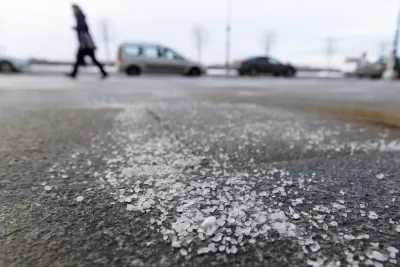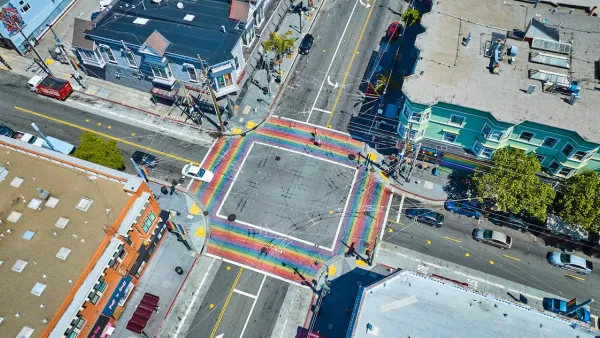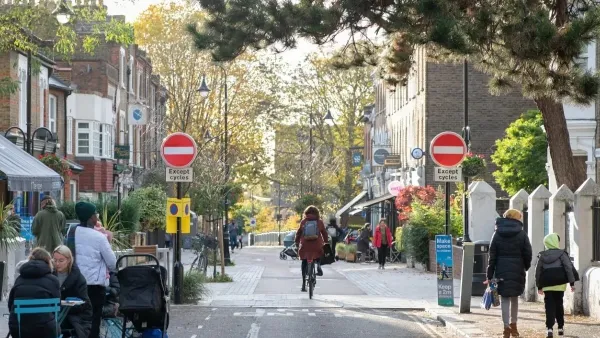Winter-oriented road design can limit the amount of polluting chloride used on the state’s roads to mitigate winter conditions.

A new road design movement in Minnesota aims to change the way we build roads and sidewalks to minimize the need for road salt, which can improve winter road conditions but also pollutes nearby water bodies with chloride. “Road salt damages vehicles, pavement and bridges, and it costs state and local governments.”
As Kirsti Marohn explains in an article for MPR News, “Low-salt design is the brainchild of Connie Fortin, a salt reduction expert who's trained more than 20,000 snowplow drivers and property maintenance workers over more than two decades.”
Developing road designs that account for where snow will pile up can reduce the need for road salt and speed up ‘pavement recovery’ without salt. For example, “Planting deciduous trees instead of coniferous along the south side of a sidewalk can reduce shadows. Designing a building so its parking lot gets full sun helps melt snow and ice quicker.”
According to Marohn, “While the design principles are voluntary right now, there’s a possibility they could become future requirements, as cities struggle to meet limits on the amount of chloride in the stormwater they are permitted to discharge into lakes and rivers.”
FULL STORY: How rethinking design could reduce the need for road salt

Maui's Vacation Rental Debate Turns Ugly
Verbal attacks, misinformation campaigns and fistfights plague a high-stakes debate to convert thousands of vacation rentals into long-term housing.

Planetizen Federal Action Tracker
A weekly monitor of how Trump’s orders and actions are impacting planners and planning in America.

In Urban Planning, AI Prompting Could be the New Design Thinking
Creativity has long been key to great urban design. What if we see AI as our new creative partner?

Cal Fire Chatbot Fails to Answer Basic Questions
An AI chatbot designed to provide information about wildfires can’t answer questions about evacuation orders, among other problems.

What Happens if Trump Kills Section 8?
The Trump admin aims to slash federal rental aid by nearly half and shift distribution to states. Experts warn this could spike homelessness and destabilize communities nationwide.

Sean Duffy Targets Rainbow Crosswalks in Road Safety Efforts
Despite evidence that colorful crosswalks actually improve intersection safety — and the lack of almost any crosswalks at all on the nation’s most dangerous arterial roads — U.S. Transportation Secretary Duffy is calling on states to remove them.
Urban Design for Planners 1: Software Tools
This six-course series explores essential urban design concepts using open source software and equips planners with the tools they need to participate fully in the urban design process.
Planning for Universal Design
Learn the tools for implementing Universal Design in planning regulations.
Appalachian Highlands Housing Partners
Gallatin County Department of Planning & Community Development
Heyer Gruel & Associates PA
Mpact (founded as Rail~Volution)
City of Camden Redevelopment Agency
City of Astoria
City of Portland
City of Laramie





























